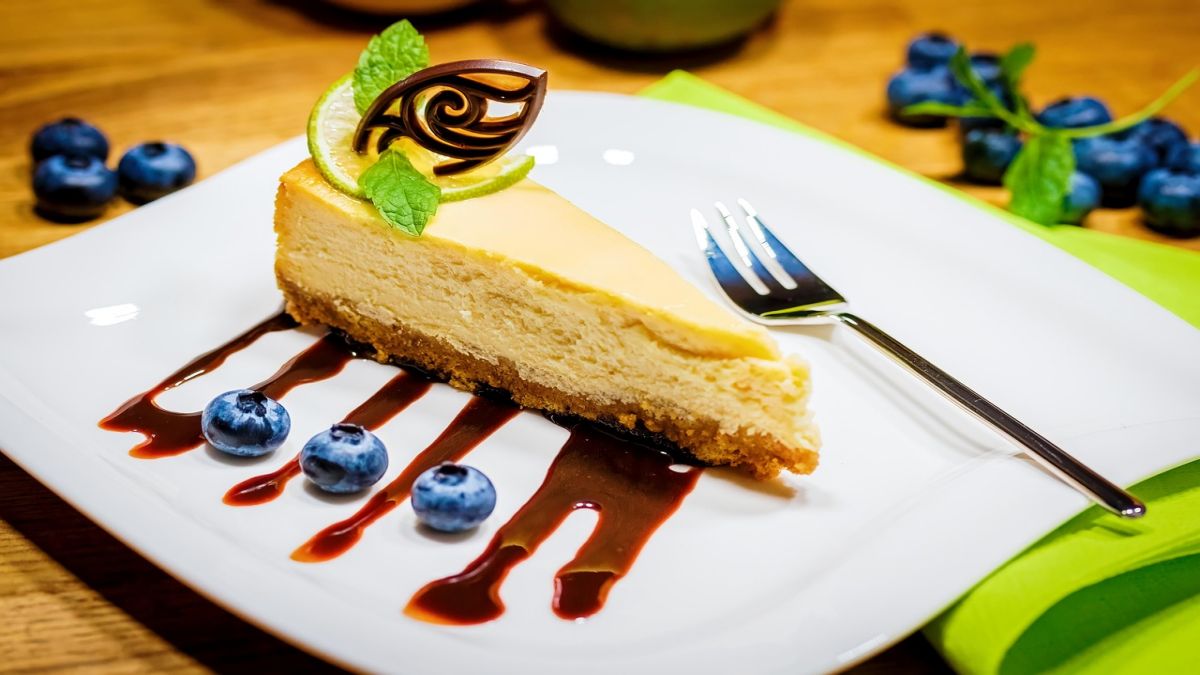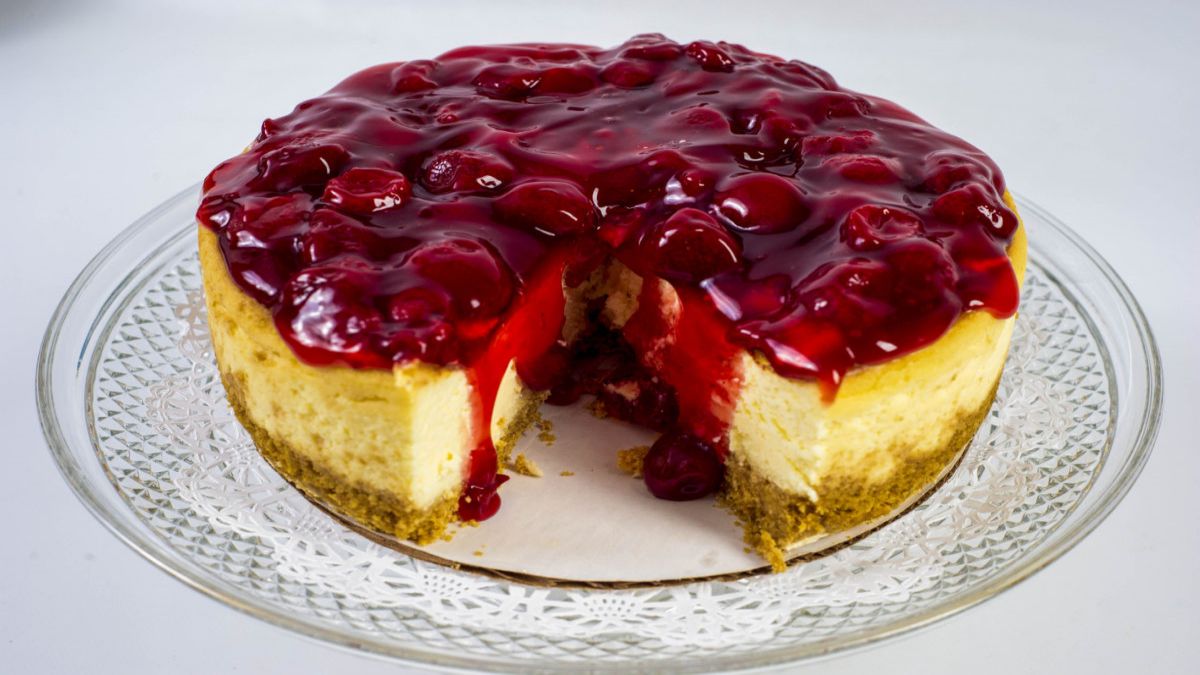Observation | Country Multipliers Makes Monetization Easier for Developers
Free Fire Shows Strong Momentum, with Its Revenue Overtaking PUBG Mobile in a Single Market for Q1 2021
How Much do you Know About the Game Minecraft?
The Next $1 Billion-level Match-3 RPG Mobile Game? Small Giant Games Releases New Zombie Theme
With monthly subscription of USD14.99 in Ubisoft, you can enjoy hundreds of 3A games!
How to Get Free Wi-Fi Networks Correctly and Safely?
Cheese desserts, with their unique blend of creamy textures and rich flavors, have captivated taste buds across the globe for centuries.
These delectable treats, ranging from velvety cheesecakes to savory cheese tarts, offer a harmonious balance of sweet and savory that is truly irresistible. But where did this delightful combination of cheese and sweetness originate?
Let’s embark on a journey through history to uncover the origins and evolution of cheese desserts, celebrating their key milestones and regional variations.
From ancient Greece, where early versions of cheesecake were served to athletes during the first Olympic Games, to medieval Europe, where various regions developed their own
unique takes on cheese-based sweets, the story of cheese desserts is as rich and varied as the flavors themselves.
Ancient Beginnings: Greeks and Romans
The earliest known cheese desserts can be traced back to ancient civilizations, particularly the Greeks and Romans. The Greeks are credited with creating the first cheesecakes, made from simple ingredients like cheese, honey, and wheat.
These early cheesecakes were served to athletes during the first Olympic Games in 776 BC, showcasing their significance even in ancient times.
Cheesecakes were thought to provide energy and strength to the competitors, making them an essential part of the athletes' diet.
The Romans later adopted and adapted these recipes, incorporating their own techniques and ingredients, such as eggs and crushed cheese, to create more elaborate versions.
They even developed baking techniques that gave the cheesecakes a different texture and flavor. Roman cheesecakes evolved to include a variety of spices and dried fruits, making them a popular dish among the wealthy.
These desserts were often enjoyed at banquets and celebrations, highlighting their cultural importance.
Thus, both the Greeks and Romans contributed to the rich history of cheese desserts, setting the stage for the diverse and delicious cheesecakes we enjoy today.

Middle Ages: The Rise of Cheese-Making Techniques
The Middle Ages marked a significant period of innovation in cheese-making techniques, leading to the production of a wider variety of cheeses.
During this time, monasteries across Europe became prominent hubs for cheese production, as monks dedicated their time to experimenting with different methods and aging processes.
This era saw not only the refinement of existing techniques but also the creation of many of the beloved cheeses we know and enjoy today. For example, Brie and Camembert emerged in France, while Gorgonzola appeared in Italy.
In addition to creating new types of cheese, this period also spurred innovation in cheese desserts. Cheesemakers began to explore the versatility of their creations in sweet recipes, giving rise to a whole new category of culinary delights.
These developments were driven by the monks' meticulous attention to detail and their willingness to experiment with flavors and textures.
The knowledge and expertise developed during the Middle Ages laid the groundwork for modern cheese-making practices and continue to influence the industry today.
European Colonization: Cheese Desserts Spread to the New World
The age of European colonization marked the introduction of cheese desserts to the New World. As explorers, traders, and settlers brought their culinary traditions with them, cheese desserts began to gain popularity across continents.
These early European settlers introduced a variety of cheese-based recipes that had been passed down through generations, each rich with regional flavors and techniques.
New ingredients available in the New World, such as exotic fruits and unique spices, were incorporated into these traditional recipes, leading to diverse and innovative adaptations.
The influx of these cheese desserts not only introduced new flavors but also led to a fusion of culinary practices between the Old World and the New World.
This cultural exchange helped to create entirely new dessert variations that reflected the blended heritage of the settlers and indigenous peoples.
Over time, these cheese desserts became a staple in many households and kitchens, celebrated for their rich taste and versatility.
The global spread of cheese desserts was well underway, laying the foundation for their enduring popularity, which continues to evolve with each passing generation.

19th and 20th Centuries: Classic Recipes Formalized
The 19th and 20th centuries saw the formalization of many classic cheese dessert recipes in cookbooks and culinary institutions.
During this period, recipes for beloved cheese desserts like cheesecake and tiramisu were perfected and documented, ensuring their preservation and continued enjoyment. The American cheesecake, charac
terized by its creamy texture and graham cracker crust, became a staple in the United States, often topped with fresh fruit, chocolate, or caramel.
Meanwhile, Italian tiramisu, with its layers of mascarpone cheese, coffee-soaked ladyfingers, and cocoa powder, gained international acclaim for its rich, yet delicate flavor profile.
These recipes, passed down through generations, reflect the cultural heritage and innovation of their respective regions, and they continue to be celebrated and adapted in kitchens worldwide.
Modern Era: The Artisanal and Gourmet Cheese Dessert Boom
In recent years, the world has witnessed a surge in the popularity of artisanal and gourmet cheese desserts. With a focus on high-quality ingredients and innovative flavor combinations, chefs and home bakers alike have elevated cheese desserts to new heights.
From creamy cheesecakes to savory cheese tarts, these desserts are becoming a mainstay in high-end pastry menus and home kitchens.
Artisanal cheesemakers are experimenting with unique aging processes and flavor infusions, resulting in an array of sophisticated cheese desserts that delight the senses.
These processes often involve meticulous attention to detail, such as selecting the perfect type of milk, using traditional methods of fermentation, and incorporating unexpected ingredients like herbs, spices, and even edible flowers.
The result is a diverse and exciting range of cheese desserts that offer something for every palate, from the mildly sweet to the boldly savory.
Regional Variations: A Taste of Diversity
Cheese desserts boast a rich tapestry of regional variations, each with its own distinct characteristics and cultural significance. Here are a few notable examples:
French Cheesecake
French cheesecake, or "gâteau au fromage," is known for its light and airy texture. Often made with fresh cheeses like Neufchâtel or fromage blanc, this delicate dessert is typically flavored with a hint of lemon zest and vanilla.
It’s a testament to the French mastery of combining elegance and simplicity in their culinary creations.

Italian Tiramisu
Italy’s contribution to the world of cheese desserts is, without a doubt, the iconic tiramisu. Originating in the Veneto region, tiramisu combines layers of mascarpone cheese, espresso-soaked ladyfingers, and a dusting of cocoa powder.
This rich and indulgent dessert has gained a devoted following worldwide, thanks to its harmonious blend of coffee and creamy textures.
American Cheesecake
The American cheesecake is a beloved dessert that has become synonymous with comfort food. Characterized by its dense and creamy texture, this dessert is typically made with cream cheese, sugar, and eggs, and often features a graham cracker crust.
Variations abound, with flavors ranging from classic New York-style to fruit-topped and chocolate-infused versions.
Conclusion
From the ancient Greeks and Romans to the modern-day artisanal renaissance, cheese desserts have a storied history that reflects the ingenuity and creativity of culinary traditions across the globe.
As we continue to explore new flavors and techniques, the timeless appeal of cheese desserts remains unwavering.
For culinary enthusiasts, understanding the rich history and diverse regional variations of these delectable treats adds an extra layer of appreciation to every indulgent bite.
Whether you’re savoring a slice of velvety cheesecake or delighting in the layers of tiramisu, remember that each cheese dessert carries with it centuries of tradition, innovation, and passion.